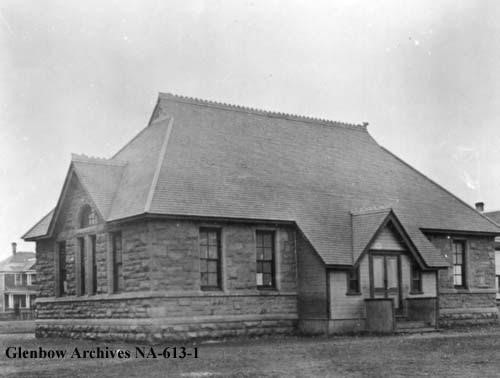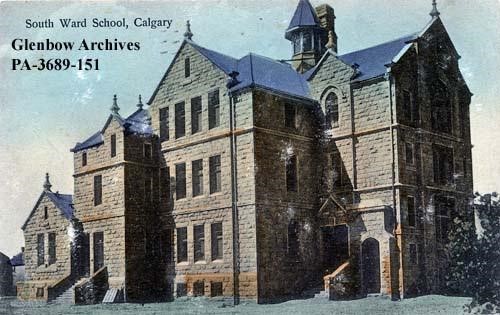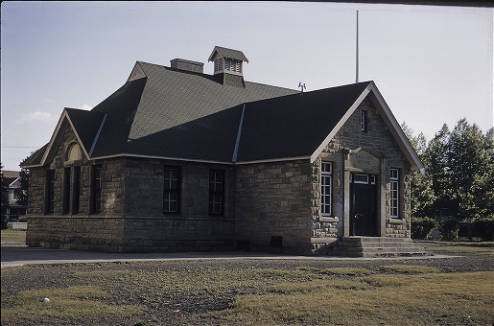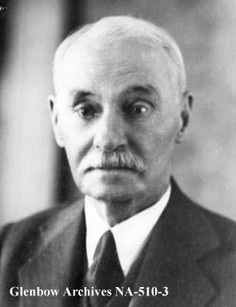Haultain School
Introduction
Text-to-speech Audio
Images
Haultain School, early 1900s

Haultain (Southward) School, 1908

Haultain School, 1958

Frederick Haultain, 1940s

Backstory and Context
Text-to-speech Audio
Haultain was constructed in 1894 with sandstone from WM and Oliver Co. Quarries. It cost roughly $2,500 to build. It was designed in the Richardsonian Romanesque style and features a rough-faced sandstone exterior with sandstone lintels, sills and arches. A medium-pitch hip roof with pronounced overhangs and a sandstone entablature above the front entrance reads “Haultain School 1892-1922.” Both of these dates are incorrect as the school was built in 1894 and the keystone carved in 1920. Originally named Southward School, in 1894, Calgary was divided into four wards with Haultain being in the southern-ward, which gave its name. The school was expanded in 1907, adding and additional ten rooms to the schoolhouse. In 1910 Southward school was renamed after Haultain. The large school, which in 1925 had the most students in the city at 525, would later be closed in 1962 due to declining enrollment. Just two years later, the larger addition would be destroyed in a fire. After being registered as a Provincial Historic Resource in 2004, the building was sold to the City of Calgary. It became of the office for Calgary Parks.
Sources
.
NA-613-1 used with permission from the Glenbow Library and Archives
PA-3689-151, used with permission from the Glenbow Library and Archives
aj_23-13, Alison Jackson Photograph Collection, Calgary Public Library
NA-510-3 used with permission from the Glenbow Library and Archives
